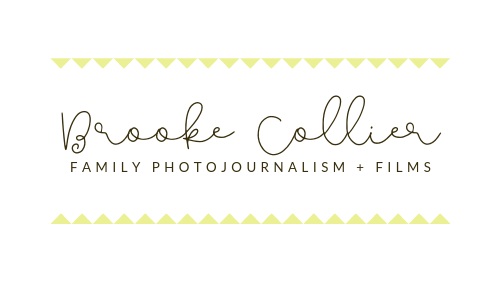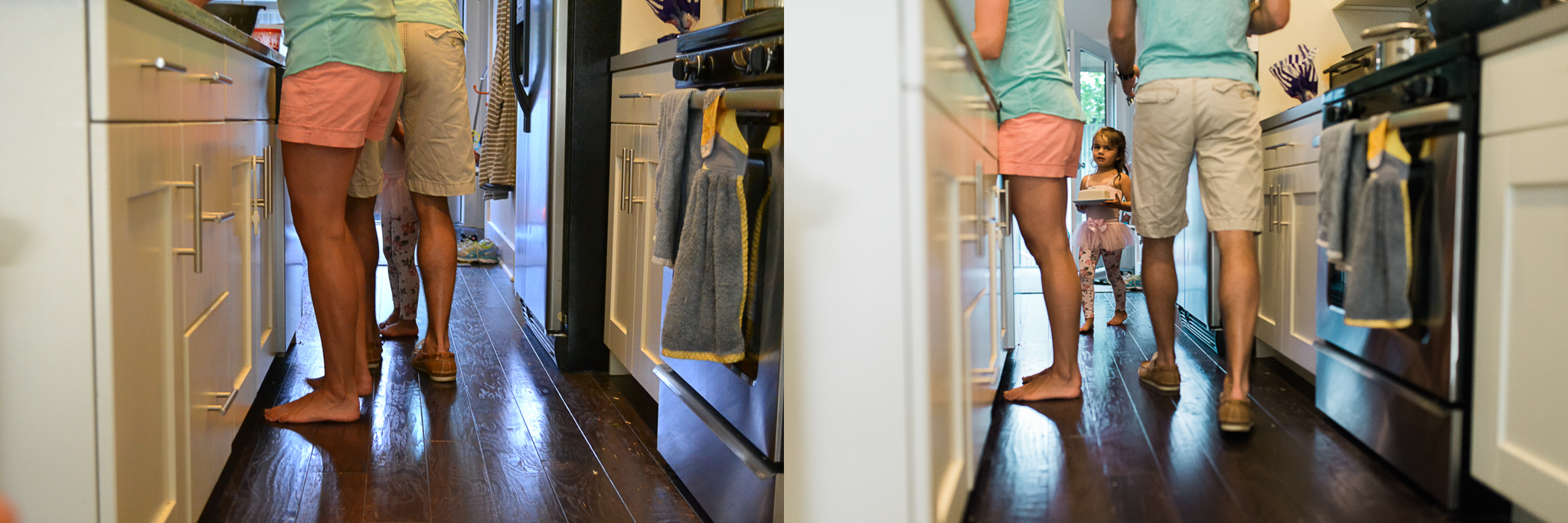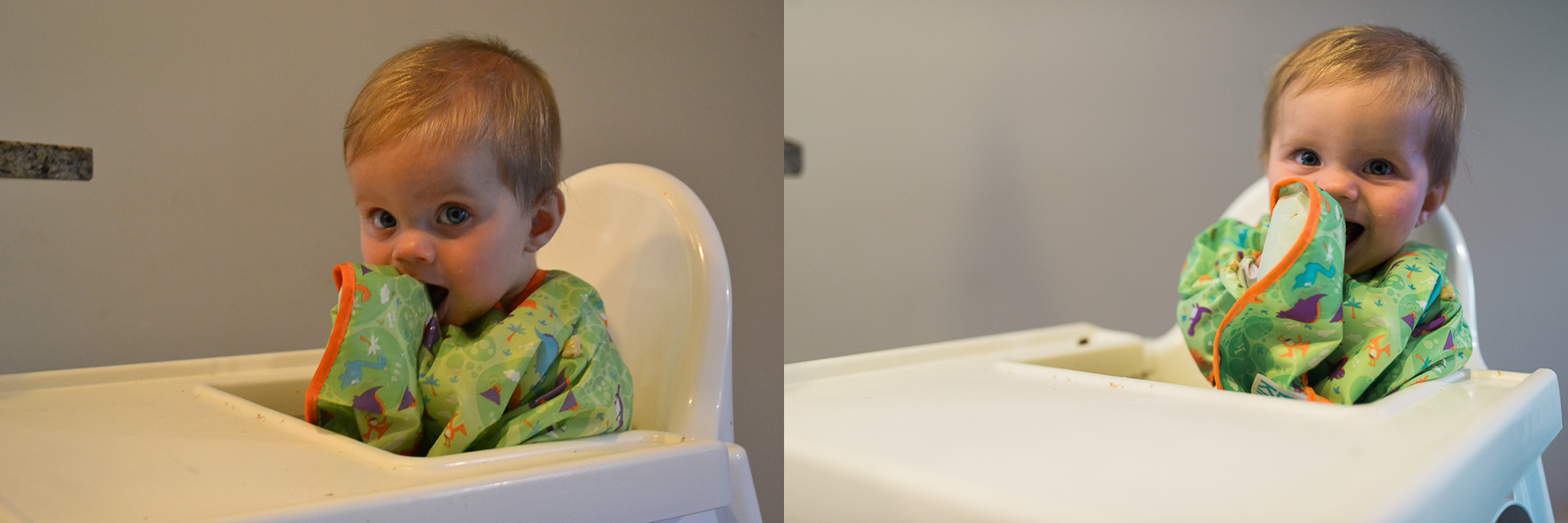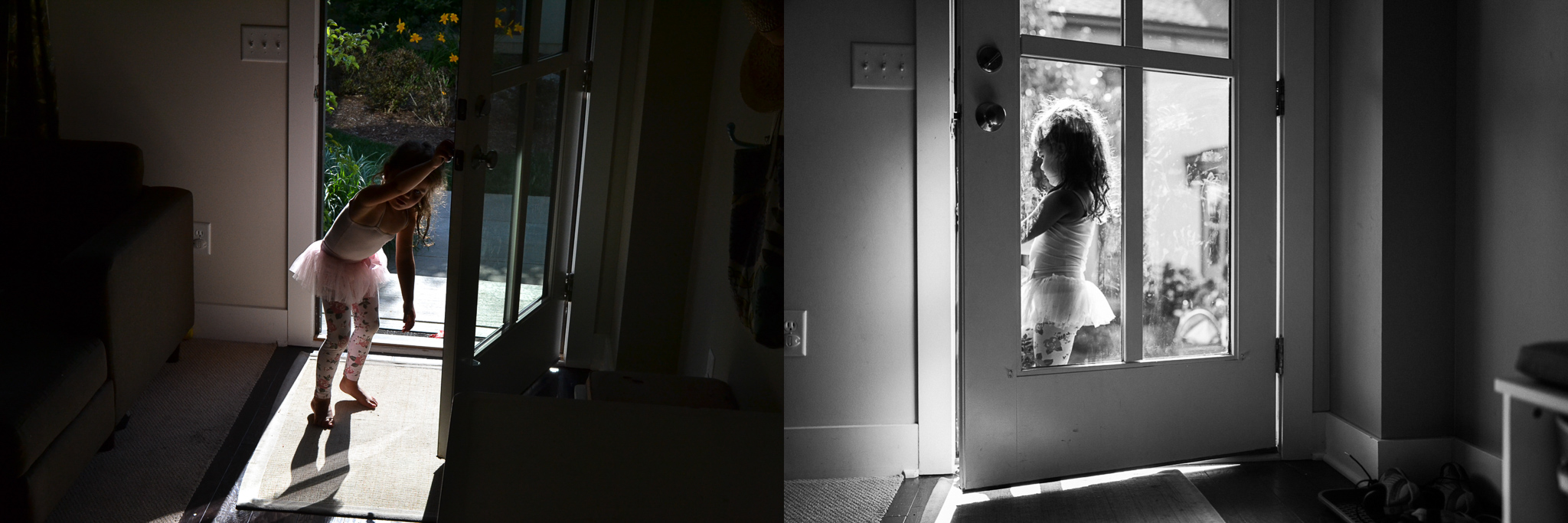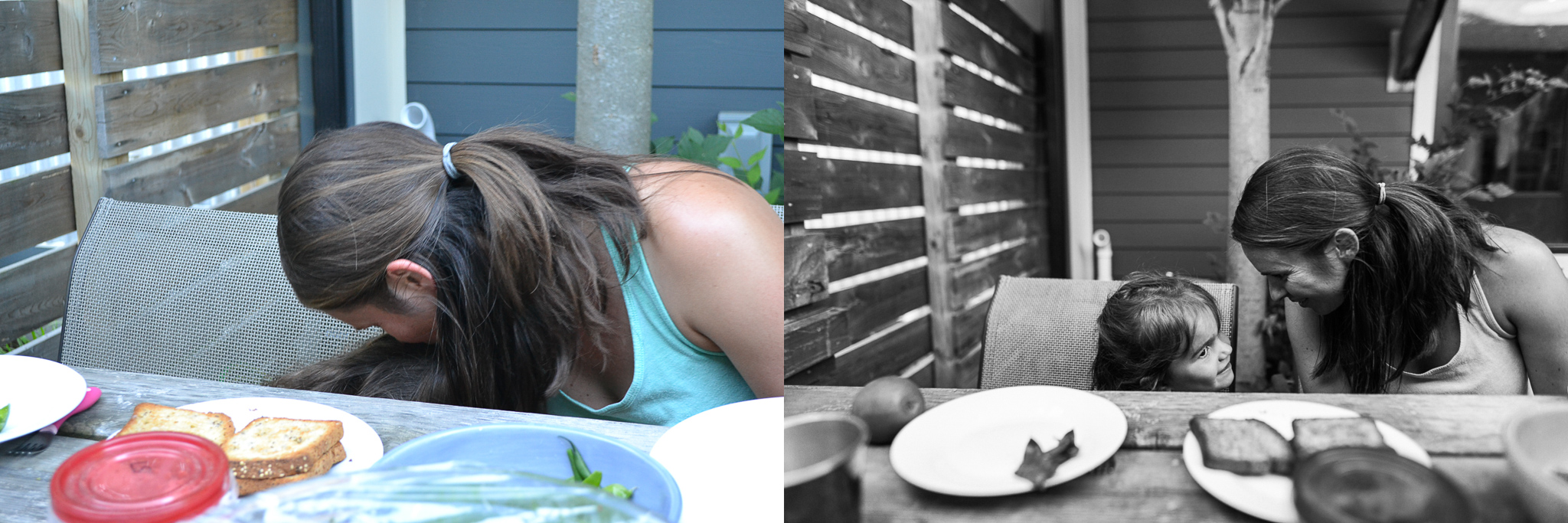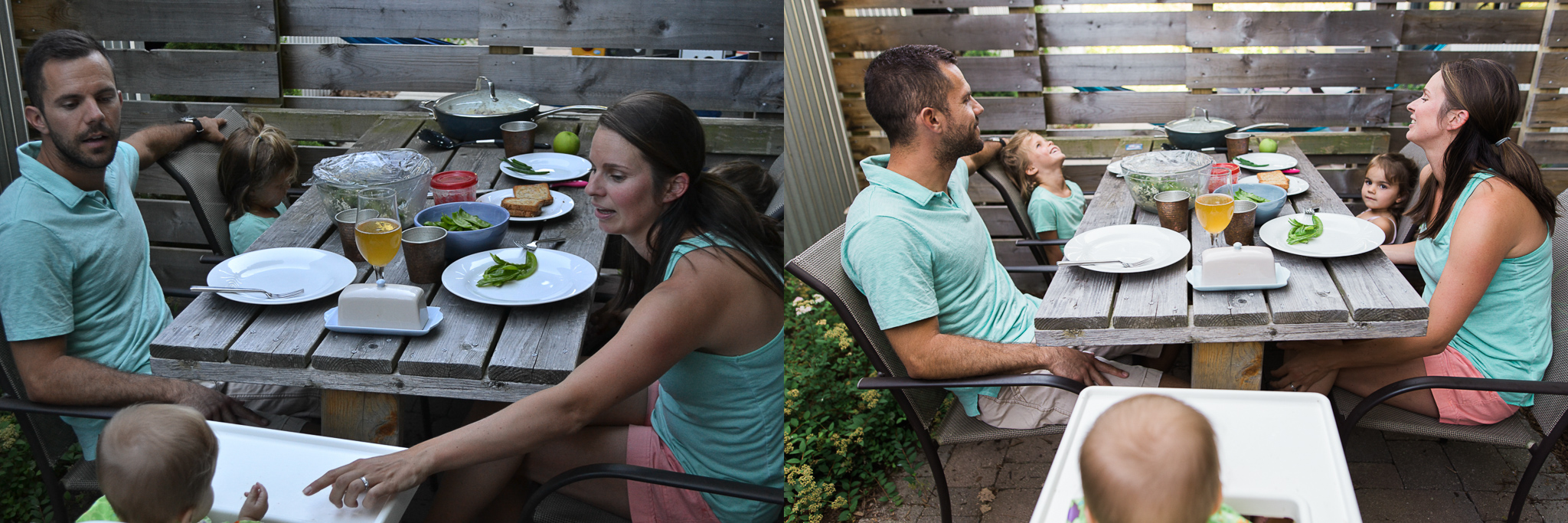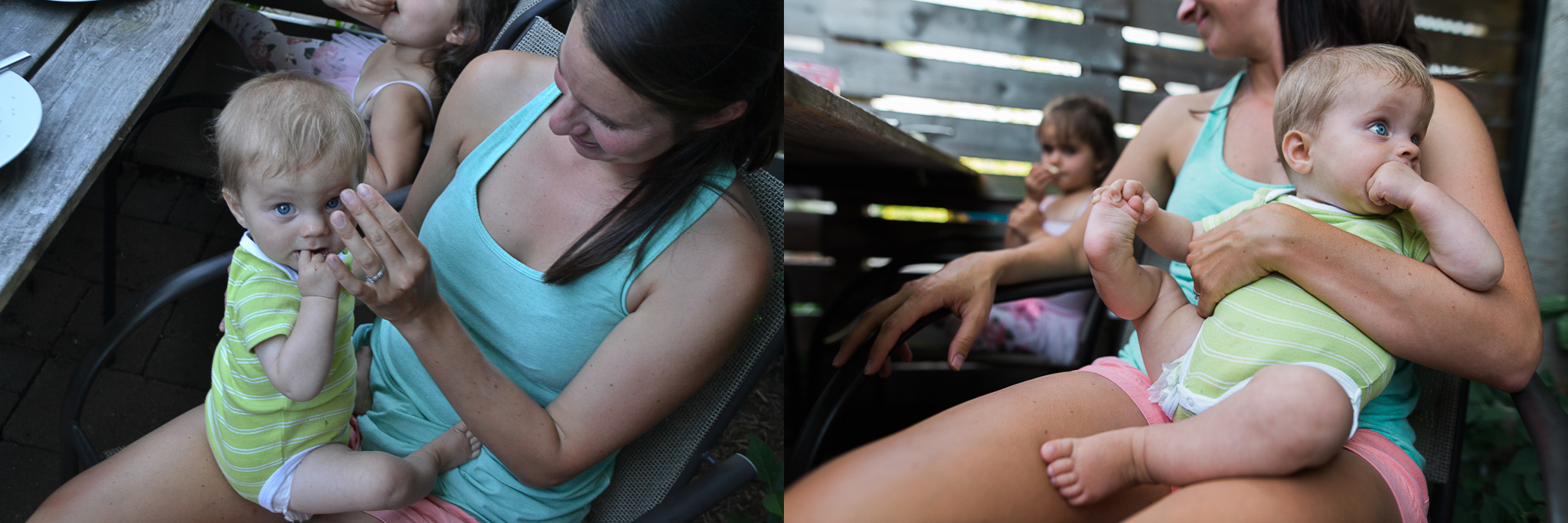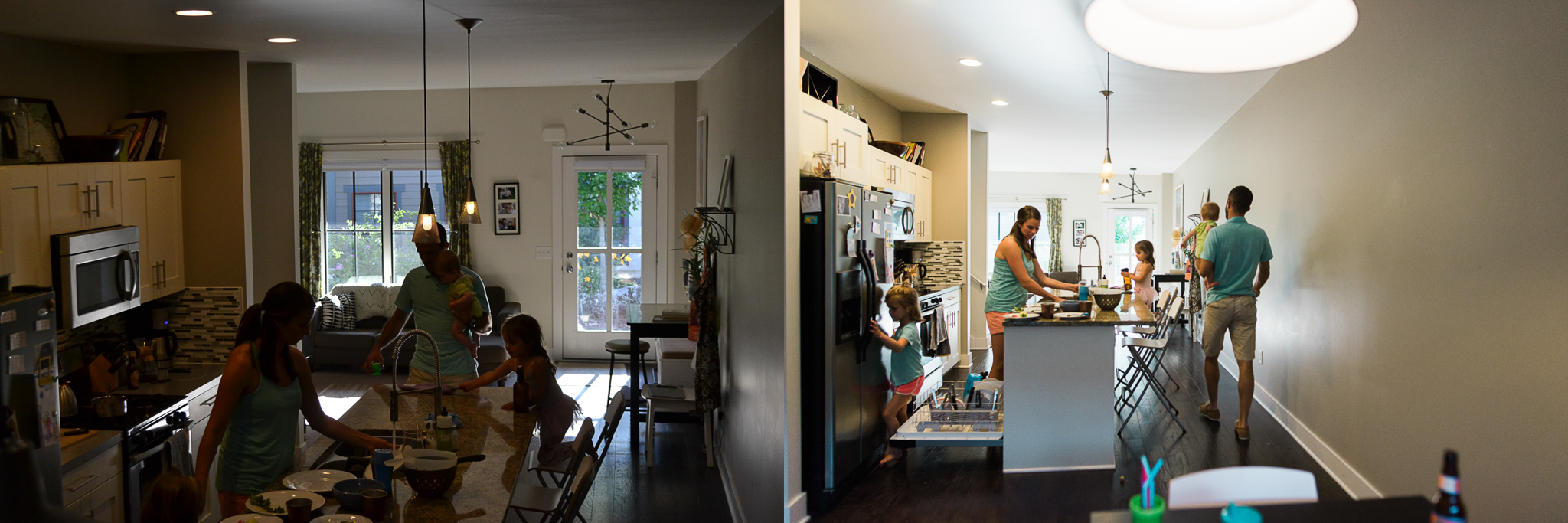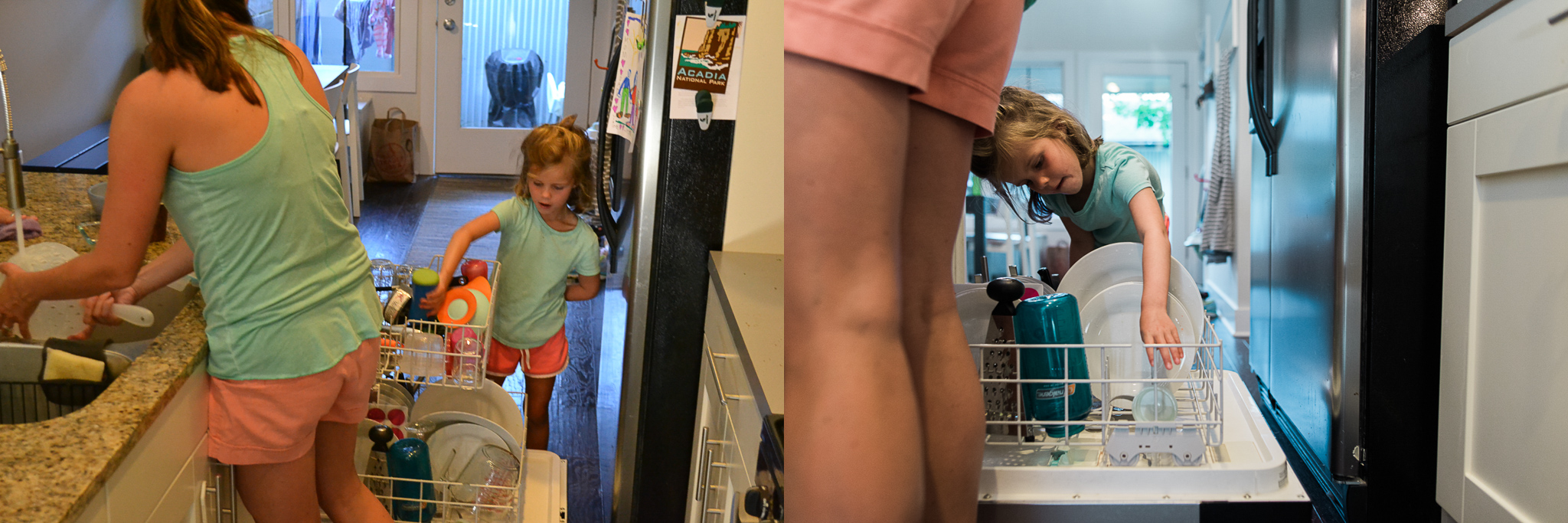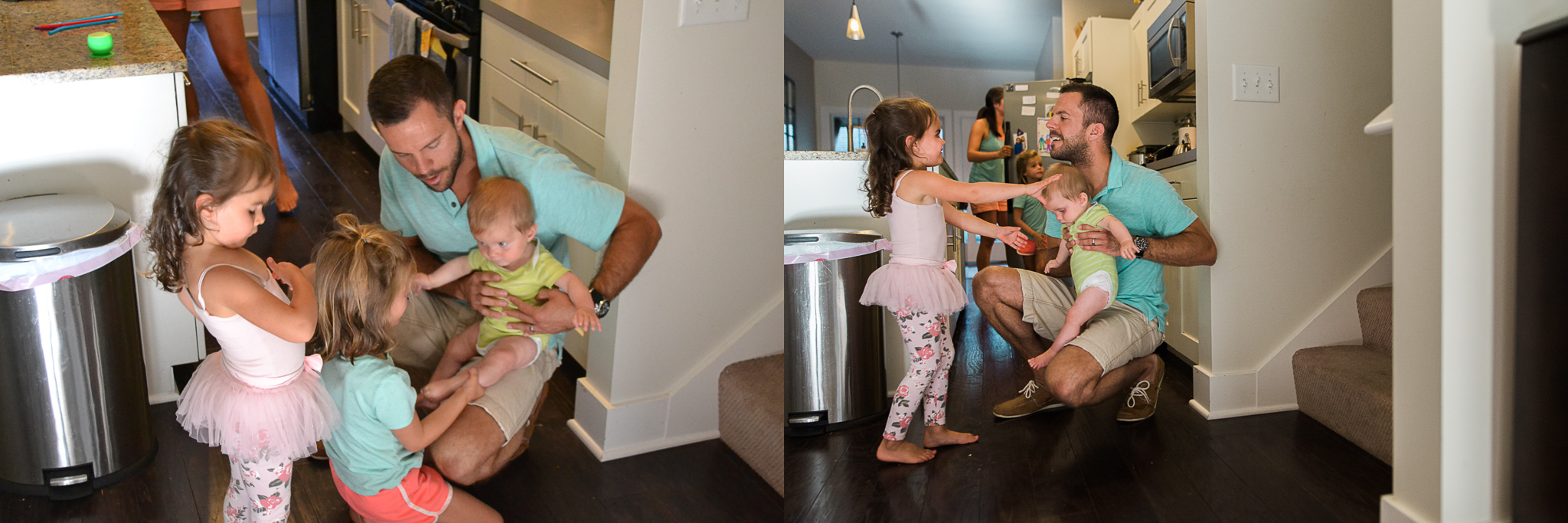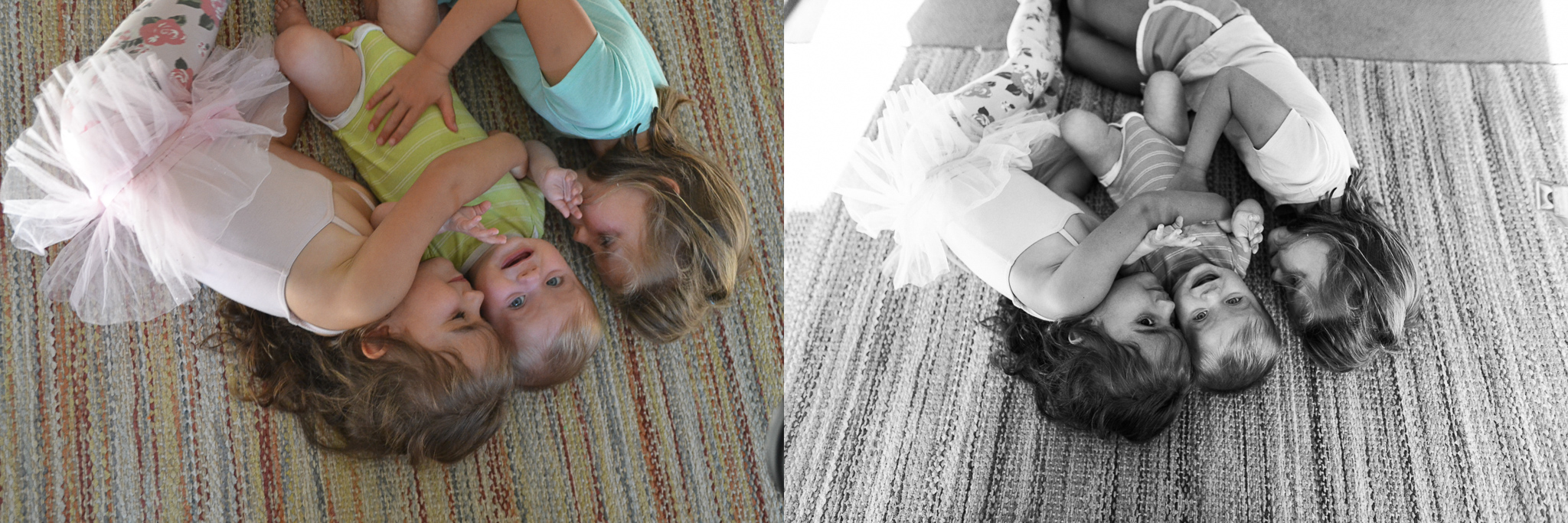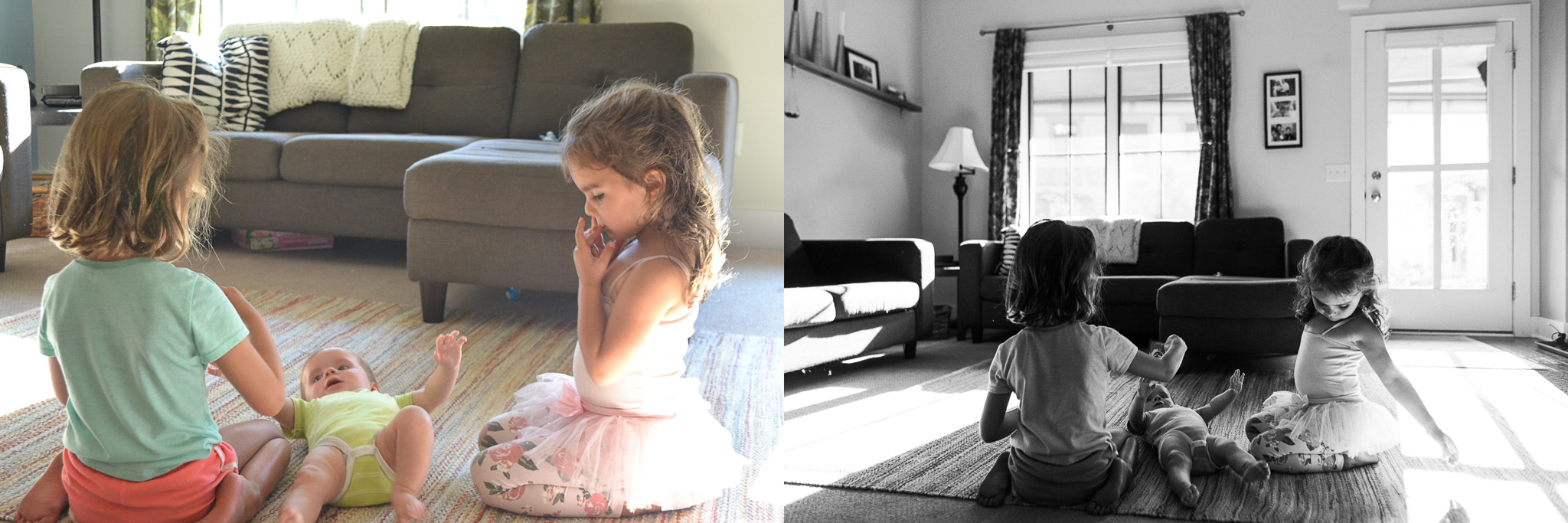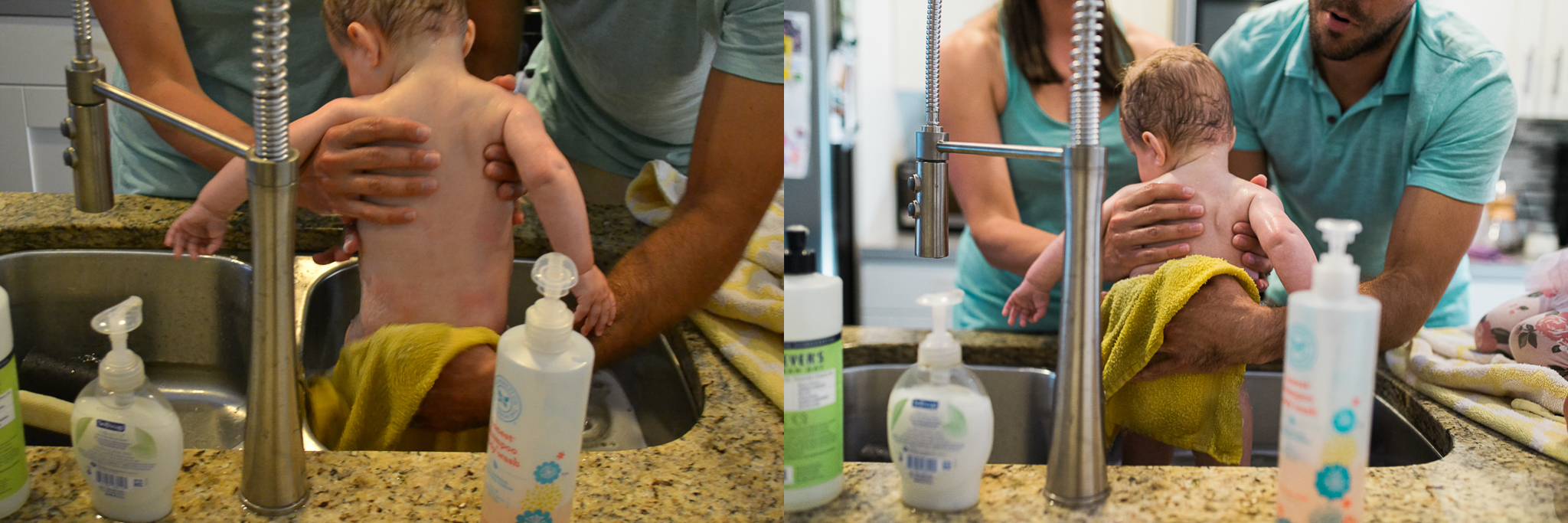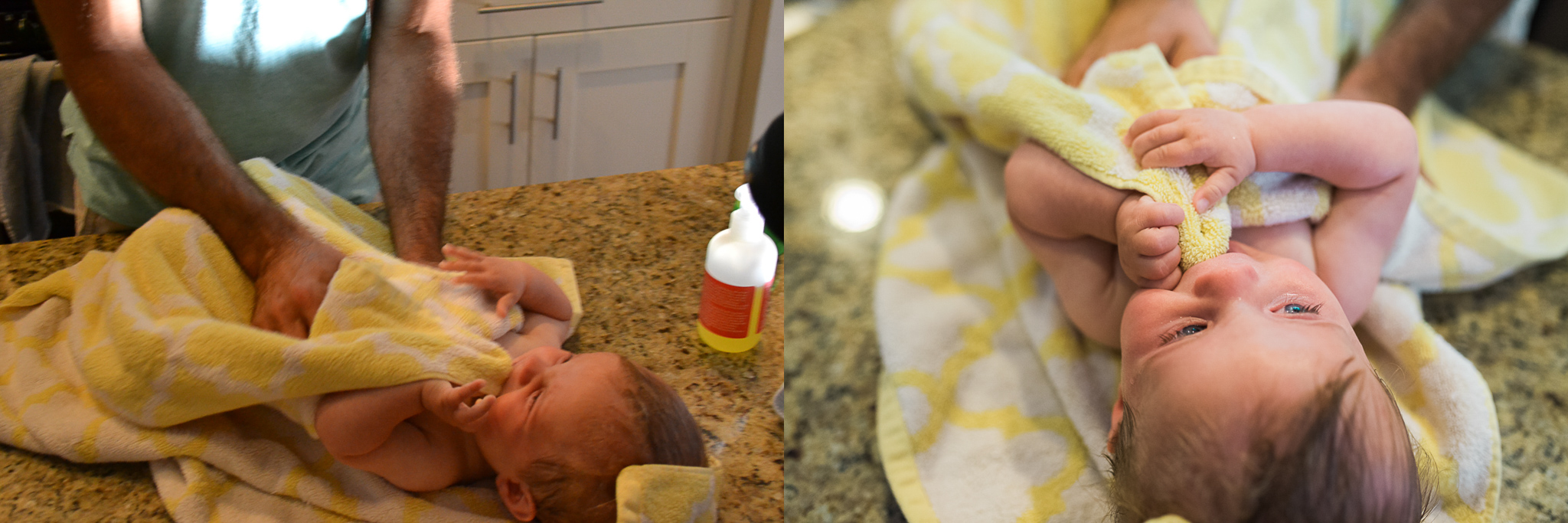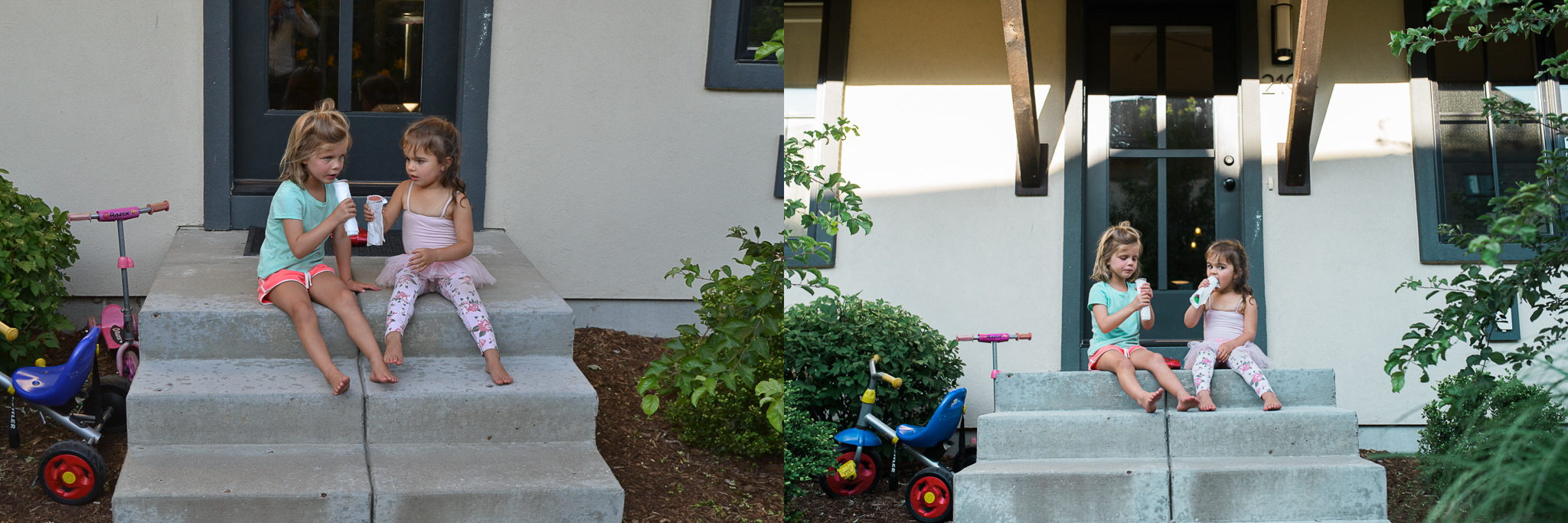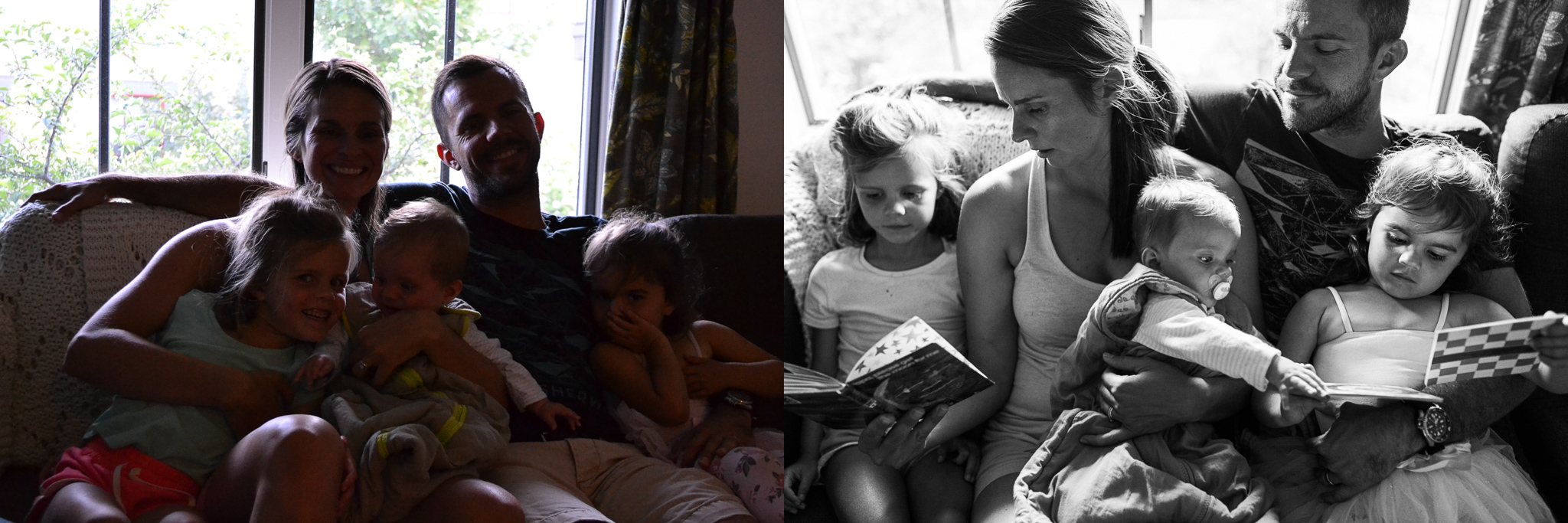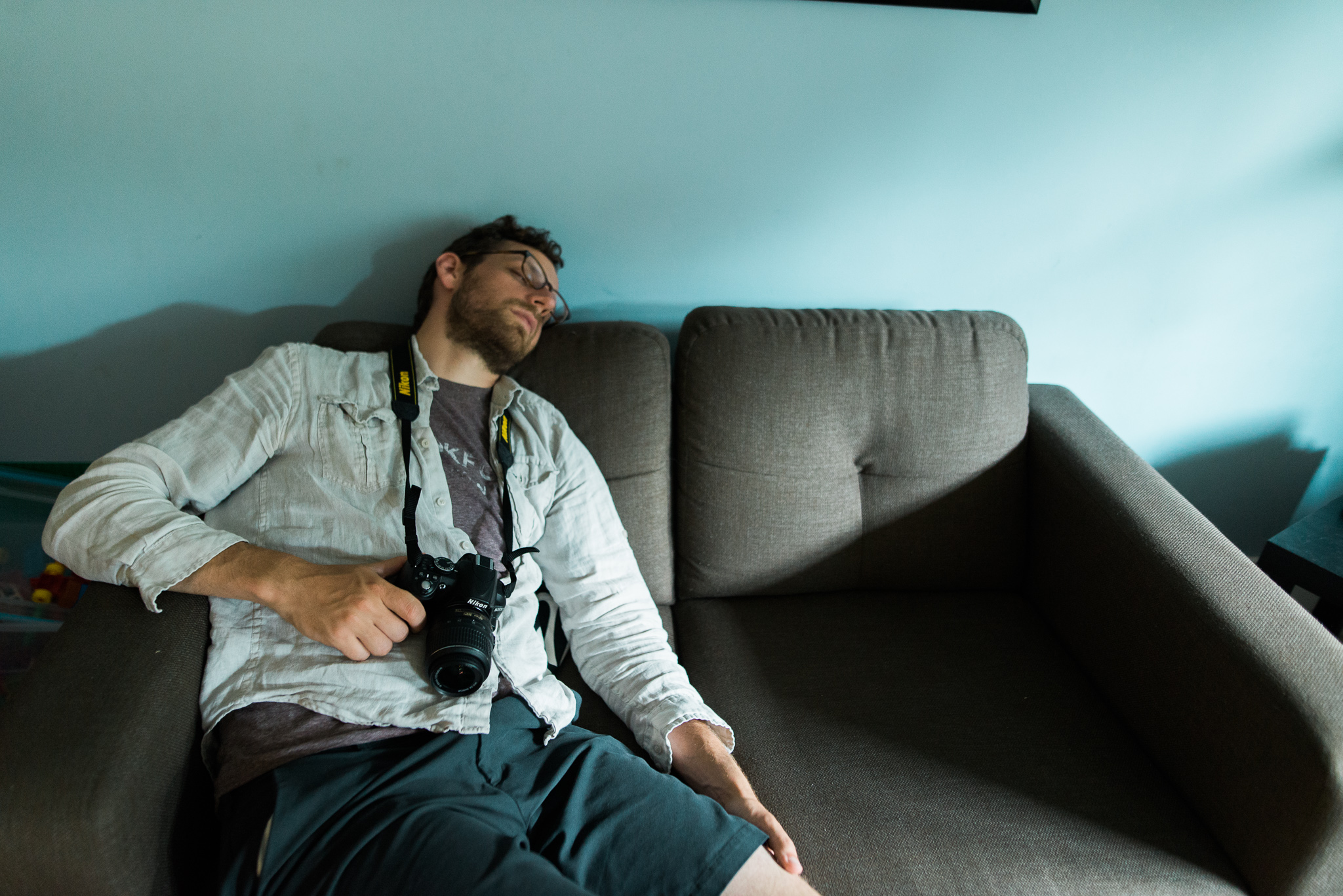In-home family photojournalism and documentary sessions can seem so... ordinary? unglamorous? unspecial? unscripted?... that you may be tempted to think it's something you could just as easily do yourself at home with your own DSLR. Maybe you've wondered why you would pay someone else hundreds of dollars to do what you can do at home, or what you would be able to do if you purchased a "nice camera" (a DSLR).
And I can see where that temptation comes from! Most of us have to make really careful choices about how we spend our money, and we really want to know that we're spending our dollars on something worth every penny we pay for it. Most of us don't want to pay someone else to do something we can do ourselves. It's called frugality and it's a prized West Michigan character trait! ;)
So I owe you an explanation of why I've set up shop doing this thing that might appear to be something anybody could do, this thing that has a price tag on it larger than many of your other household purchases.
To illustrate the reasons, I set up a bit of an experiment! So this is going to be fun!
Here's the set-up: I brought my husband, Tim (who is a pastor, not a photographer), along to a 2-hour, in-home family photojournalism session. I set him up with an entry-level/consumer model DSLR likely very similar to the one you might own. I put the camera settings on Program mode (it's just one notch more sophisticated than Auto mode) and kept the kit lens on it (the lens every store-bought DSLR camera comes with). In other words, I tried to set up the camera settings and gear to those of the average, at-home, non-professional DSLR user. As I shot, he followed me around, shooting from right behind me to get very similar scenes/moments. After the session I loaded his photos and mine to my computer and imported them into my editing software. Only, I didn't edit his, because I'm again assuming that the average at-home DSLR user isn't likely taking the time to do this or wouldn't own the editing software that a professional does. But I did spend some time editing my own images, perfecting and personalizing them with my characteristic style.
What you see here is a series of side-by-side comparisons. In each diptych, on the left is Tim's image and on the right is my image. After you've looked through all the images, some summary thoughts are at the end.
Ready? Go...
Also, hilariously, about an hour and 15 minutes into the session, Tim started to run out of steam. To be fair, he'd had a very rough/interrupted night of sleep the night previous and I know he wouldn't have done this if the family we were photographing together was anyone other than our siblings, but this happened...
Evidently, in-home family photojournalism is not for the faint of heart. Hhahaha.
So, in case it isn't clear from just looking at the photo diptychs above,
You hire me to:
See beauty and possibility in an ordinary scene. Often there are scenes you might not notice yourself because you're so IN it day in and day out, but that's precisely why it's worth capturing.
Compose an image that "works" (tells a story, captures a personality, is nice to look at). Even a "nice camera" doesn't know how to compose an image in order to make it visually appealing and inclusive of all the important bits while also excluding all the distractions and clutter. It takes someone with lots of practice and a natural gift to do that part.
Know how to make the camera do what it needs to do in order to make the vision come across in a photo. Even a "nice camera" in "Auto" mode will prioritize things that you don't mean for it to prioritize, like putting focus on a part of the scene that you aren't interested in or exposing for the bright lights behind your subject thereby turning your subject into a silhouette. A professional photographer knows how to boss a camera around so that it takes a picture that is in line with what your eyes are seeing.
Make sure every member of the family is represented in the photos. If you own your own camera, chances are one or the other parent is the one who uses it the most, which can sometimes mean that the one parent is rarely in any photos his/herself. But when a professional comes in to do photos, even that parent will certainly be included in the images.
Own and maintain a camera that can handle low-light situations without getting blurry or orange. The cameras I carry cost quite a bit more money than the average family camera, and that's because they can do more stuff. They can shoot clear, crisp images even in low light situations (which in-home photos so often are). I also own lenses that are "faster" and more capable in a wide variety of settings. You don't have to buy all the thousands of dollars of gear, because your photographer is carrying it for you.
Own and masterfully use editing software to make a finished piece of art of of each image. You're not likely to spend hundreds of dollars on software to edit images (plus, learning to edit is an entirely separate sharp learning curve), nor the external hard-drives to organize and store all the large images, or the back-up systems to ensure nothing is lost. But I have and utilize all of those things so that you don't have to.
Have no other things competing for my time to organize, edit, deliver and print your photos. This is my JOB, which means that I WILL "get around to" culling, editing, and uploading your photos, plus I'll make sure you have some printed in a photo book, too. So often when we shoot for ourselves at home, we never get to that part and we're left with backed up memory cards and a ton of folders on our hard drives full of unsorted, untouched, and unprinted photos.
Thanks so much for looking and reading this far. I hope that maybe it makes a bit more sense now why you'd want to hire someone else to take photos that you COULDN'T actually take yourself. :)
PS: I'll be blogging this family session fully and in a more typical fashion a bit later this week, too.
